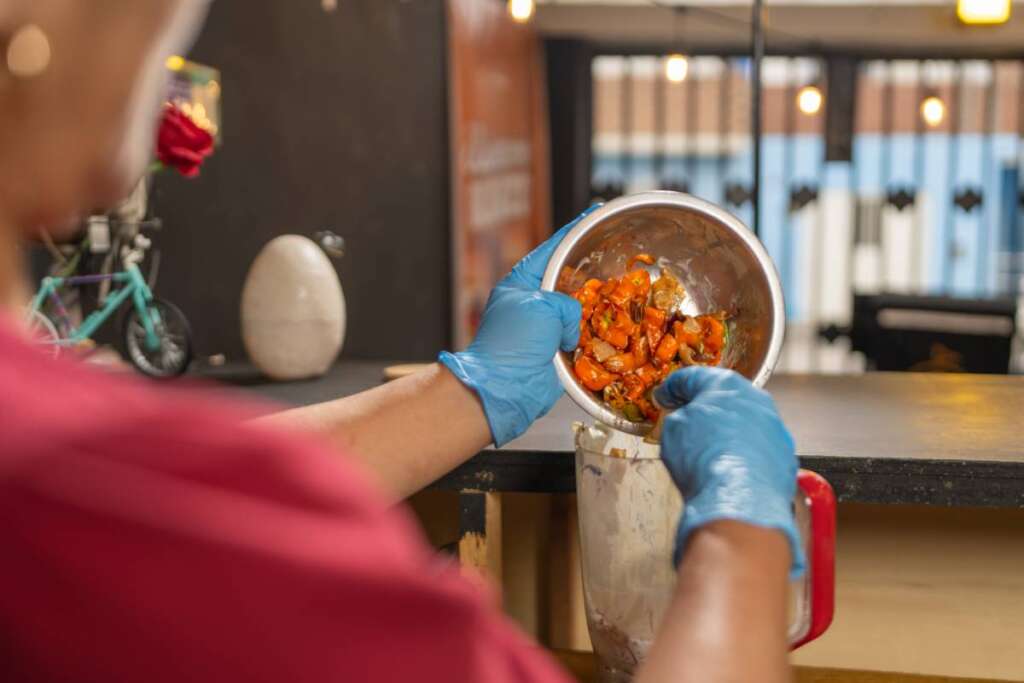Food waste is a significant problem in the restaurant industry, with large amounts of food being discarded daily. Not only does this contribute to environmental issues, but it also affects a restaurant’s profitability.
Managing food waste effectively can help a restaurant cut costs, improve sustainability, and enhance its reputation among eco-conscious customers.
This article explores practical strategies that restaurants can implement to reduce excessive food waste each day.
1. Conduct a Food Waste Audit
The first step in reducing food waste is understanding how much waste is being generated and where it comes from. A food waste audit involves:
- Tracking food that is thrown away and categorizing it (e.g., spoilage, preparation waste, plate waste).
- Identifying patterns and pinpointing problem areas.
- Using audit findings to develop a waste reduction strategy.
By conducting a regular audit, restaurant owners and managers can make informed decisions about where to cut back on waste. This process also helps prioritize efforts and allocate resources effectively.
2. Improve Inventory Management
Poor inventory management is one of the leading causes of food waste. Restaurants can prevent excessive waste by:
- Implementing a First In, First Out (FIFO) system to ensure older ingredients are used before newer ones.
- Keeping track of expiration dates and planning menu items accordingly.
- Using inventory management software to monitor stock levels and avoid over-ordering.
By carefully managing inventory, restaurants can minimize spoilage and reduce unnecessary purchases. This practice also ensures that high-quality ingredients are consistently used, improving the overall dining experience.

3. Optimize Portion Sizes
Serving oversized portions often leads to leftover food being discarded. Restaurants can reduce waste by:
- Analyzing customer consumption patterns and adjusting portion sizes accordingly.
- Offering different portion options to accommodate varying appetites.
- Allowing customers to choose side portions instead of providing them by default.
When portions are right-sized, customers are less likely to leave food uneaten, reducing overall waste. Additionally, smaller portions can lead to higher customer satisfaction by offering more personalized dining experiences.
4. Reimagine Leftovers and Food Scraps
Many food scraps and leftovers can be repurposed rather than discarded. Some creative ways to use leftovers include:
- Using vegetable scraps to make broths and stocks.
- Turning stale bread into croutons or breadcrumbs.
- Repurposing excess cooked food into new dishes, such as soups or stews.
- Offering a “Chef’s Special” that creatively incorporates surplus ingredients.
By getting creative with leftovers, restaurants can maximize ingredient usage and minimize waste. This approach also inspires culinary innovation and can result in unique dishes that attract customers.
5. Donate Excess Food
Rather than throwing away surplus food, restaurants can partner with food banks and charities to donate leftovers. This not only helps reduce waste but also contributes to the local community. Key considerations for food donation include:
- Ensuring donated food meets health and safety standards.
- Working with organizations that accept restaurant donations.
- Establishing a regular pickup or delivery schedule to keep food fresh.
Food donation programs are an excellent way for restaurants to give back while reducing their environmental footprint. Additionally, these efforts enhance the restaurant’s reputation among socially responsible customers.

6. Compost Organic Waste
Not all food waste can be eliminated, but organic waste can be composted instead of sent to landfills. Restaurants can:
- Partner with local composting programs.
- Invest in on-site composting solutions, such as the Hass Thailand Electric Composter.
- Educate staff about separating compostable waste from non-compostable items.
The Hass Thailand Electric Composter is an innovative solution that allows restaurants to efficiently process food waste into compost on-site for their indoor plants. Composting reduces landfill waste and creates nutrient-rich soil that can be used for gardening and farming.
By adopting composting practices, restaurants can make a significant positive impact on the environment.
7. Train Staff on Waste Reduction Practices
Employees play a crucial role in reducing food waste. Proper training can help staff:
- Follow portion control guidelines.
- Handle and store food correctly to prevent spoilage.
- Identify opportunities to repurpose ingredients.
- Separate waste properly for composting and recycling.
Regular staff training sessions ensure that waste reduction becomes part of the restaurant’s daily operations. Engaged and informed staff are more likely to embrace sustainability practices and contribute to the restaurant’s goals.
8. Offer Takeaway and Leftover Options
Encouraging customers to take leftovers home can significantly reduce plate waste. Strategies include:
- Providing biodegradable or compostable takeaway containers.
- Training servers to ask customers if they’d like to take home uneaten food.
- Promoting a culture where taking leftovers is seen as normal and encouraged.
By offering convenient takeaway options, restaurants can minimize food waste while enhancing customer satisfaction. Customers appreciate the opportunity to enjoy their meals later, and it reinforces the restaurant’s commitment to sustainability.

9. Monitor Customer Preferences
Understanding what customers prefer can help restaurants reduce menu-related waste. This can be achieved by:
- Gathering feedback on portion sizes and menu items.
- Identifying which dishes have the highest leftover rates.
- Adjusting the menu based on customer preferences and demand trends.
By aligning menu offerings with customer desires, restaurants can minimize uneaten food. Additionally, a customer-focused approach strengthens loyalty and encourages repeat visits.
10. Implement Smart Technology
Technology can help restaurants optimize operations and reduce waste. Useful tools include:
- Smart scales and food waste tracking apps to monitor waste in real-time.
- AI-powered ordering systems that predict demand and prevent overstocking.
- Temperature monitoring systems to ensure food is stored correctly and doesn’t spoil prematurely.
These technologies enhance efficiency and support long-term waste reduction efforts. Investing in smart technology can also provide valuable insights that lead to continuous improvement.
11. Partner with Sustainable Suppliers
Sourcing ingredients from sustainable suppliers can help reduce waste before food even reaches the restaurant. Considerations include:
- Purchasing from local farms to reduce food miles and spoilage.
- Choosing suppliers that offer eco-friendly packaging.
- Working with vendors who provide flexible order quantities to avoid overstocking.
Sustainable sourcing not only minimizes waste but also supports ethical food production practices. Partnering with responsible suppliers aligns with the restaurant’s commitment to sustainability and resonates with environmentally conscious customers.
12. Promote a Culture of Sustainability
Creating a waste-conscious culture within the restaurant and among customers fosters long-term change. Ways to promote sustainability include:
- Displaying signage about the restaurant’s waste reduction efforts.
- Hosting events or initiatives that educate customers about food waste.
- Engaging with customers on social media to share waste reduction tips and success stories.
When sustainability is ingrained in the restaurant’s values, it becomes a priority for both staff and patrons. This culture shift encourages ongoing innovation and reinforces the restaurant’s positive impact on the environment.
Conclusion
Reducing excessive food waste in a restaurant requires a combination of smart inventory management, portion control, creative repurposing, and staff training. By adopting sustainable practices, restaurants can lower costs, benefit the environment, and build a positive reputation.
Incorporating tools like the Hass Thailand Electric Composter and engaging staff and customers in waste reduction efforts makes the process more effective and impactful.
Implementing these strategies not only makes good business sense but also contributes to a more sustainable food system for the future.








Leave a Comment